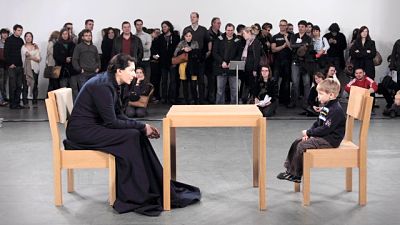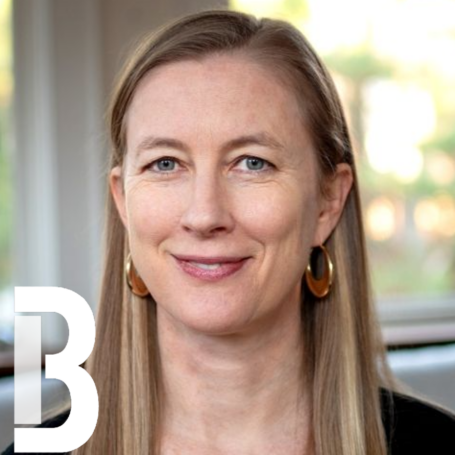Performative Social Science?
 Performative social science is currently gaining attention, even popularity, amongst academics who are particularly frustrated with PowerPoint as the only “show and tell” game in town. Over time, academic PowerPoint lectures and presentations have devolved into mostly “tell”—slides of text simultaneously recited to captured audiences. Academic publishing also has its limitations in reaching the wider community. The actual readership of academic journal articles is quite low and, by their nature, have a limited wider readership. New means of including a wider public are needed.
Performative social science is currently gaining attention, even popularity, amongst academics who are particularly frustrated with PowerPoint as the only “show and tell” game in town. Over time, academic PowerPoint lectures and presentations have devolved into mostly “tell”—slides of text simultaneously recited to captured audiences. Academic publishing also has its limitations in reaching the wider community. The actual readership of academic journal articles is quite low and, by their nature, have a limited wider readership. New means of including a wider public are needed.
Performative social science embraces the use of tools from the arts (e.g., photography, dance, drama, filmmaking, poetry, fiction, etc.) by expanding—even replacing—shopworn methods of research and diffusion of academic efforts. A third potential of these new arts-based methods of exploration and dissemination is inclusion in these processes of the very communities that we research and/or try to reach with our investigations. When all three elements (Research/Dissemination/Community) are situated in an arts-based approach and are working in tandem, performative social science is at its best.

The piece by Kip Jones is taken from Discover Society, a not-for-profit collaboration between sociology and social policy academics and publishers, and was published under the title, “What Is Performative Social Science? The Potential of Arts-Based Research and Dissemination.” It is republished with permission and under a Creative Commons license.
No, performative social science is not simply writing a poem or putting on a play merely because that happens to be a pastime (or frustration) of an academic. Rather, it is finding the right arts-based method to help answer the research question and/or to disseminate the findings to the public. Ideally, it is about forming collaborations with artists themselves and creating a professional learning and/or dissemination experience, which includes the wider community to engender a meaningful investment in the project, its outputs and outcomes.
Can you elaborate?
Is performative social science art or social science? It isn’t either. It is a fusion of both, creating a new model where tools from the arts and humanities are explored for their utility in enriching the ways in which we research social science subjects and/or disseminate or present our research to our audiences.
It certainly isn’t taking interview transcriptions, leaving out a line or two here and there, rearranging it on the page in stanza format mimicking poetry, and then passing it off as poetic inquiry (or even worse – calling ourselves poets). It isn’t thinking that our lives are so precious and unique (the “snowflake”phenomenon) that surely the world wants us to dramatize them—too often through embarrassingly intimate performances of over-cooked angst. Typically to captured conference audiences, academics present these hysterics by crawling around the floor for half an hour and calling it dance or by producing a monologue that seems literally to have lost the plot—never having a narrative arc or conclusion. As audience members, we often wish we had chosen the parallel book launch with free sherry instead.
Rather than these embarrassments let us return to what we already know quite well: academic research.
I recall the standard rule-of-thumb suggestion that we frequently make to postgraduate students: “Find the research method that best fits the research question(s).” This imperative applies to arts-based research as well. Within the vast richness of the arts and humanities, which lens, device, technique or tradition might best answer our questions, deepen our research process or expand our dissemination plan? Do we automatically put on a play or make a film from our research data because we are so many frustrated actors or film directors, without ever asking which art form best fits the research question or the data that our research has produced? Are we willing to form a partnership with a filmmaker or poet, choreographer or animator, and then ‘let go’ of control and truly engage in a collaborative effort?
What lessons have you learnt so far?
Funders are currently encouraging researchers to find ways to reach wider audiences with their findings, and, this ‘impact’ agenda has encouraged some of us to look beyond academic journals or narrow academic subject groups.
Performative social science, when it is at its best and humming along, is a synthesis that provides answers to many of these very requirements. Ideally, our audiences should be almost unaware of the seams where we have pulled together in-depth, scholarship with artistic endeavor. In my estimation, part of the value of doing arts-based research is not only in breaking down boundaries, but also in discarding the old expectations and frameworks of what research is supposed to resemble after it is finished. Any academic written texts reporting our efforts at arts-based research should be supporting ancillary documents to our productions, providing a trace, trail or map, not the other way round. Texts should certainly not be the final results orraison d’êtres of our investigative efforts.
Resources
+ A (very) short reading list on Performative Social Science
+ A Manifesto for Performative Social Science
Nonetheless, we are researchers. We are not actors, directors, filmmakers, dancers or poets. There are many opportunities and outlets (and frustrations and roadblocks) for those who wish to pursue those professions. We can learn a great deal from these folks who often find it necessary to wait tables and do other menial jobs in order to pursue their dream professions in the arts. They may help us look at our own field through new lenses, but let’s not insult them by falsely assuming their hard-earned mantles.
In return, a word of caution to artists who might be drawn to working with researchers: the world of academia is not simply a new venue for you to put on a play, a dance or to publish a poem. There are both constraints and opportunities in the academic world. Which can be shared and understood through collaboration.
Through interfaces with both practitioners and practices from the arts and humanities, opportunities are presented to work with academic material and expand its means of production and dissemination to novel and creative levels. This requires the fusion mentioned earlier. This necessitates cooperation and collaboration. Communication and common ground are central to successful partnership and union.
The intuitive aspects of shared culture, coupled with a more universal response to life’s tribulations and injustices (and, therefore, artistic expressions of these emotive components), compete for resolution with the more rigid academic ethical frameworks and methodological constraints. By developing trust in intuition and the naturally expressive and moral potential of these personal resources, social science research can become richer and more human, if we only are willing to jettison some of the baggage of the old academic rigor and dry procedural ethics.
Do you have any closing words of caution?
Some academics would rather incorporate the language of what we are doing into their writing without ever challenging either their own thinking or their methods. They subsume the language of performative social science and/or arts-based research, but never really re-examine their own procedural methods or dissemination possibilities. The developing terminology of PSS is, in this way, embedded within standard academic journal texts rather than through any meaningful reinvention/re-creation of research methods or dissemination.
Most of all, however, let us be careful not to implode PSS through an overblown sense of what we are about. In our enthusiasm, let’s not be too quick to anoint ourselves as poets, actors, dancers or magicians. If we do eventually earn those titles, I am sure that others more qualified to judge will be sure to let us know.
























































































This commentary is a reworking of the script for a seminar at
Bournemouth University, October 2010, which was the foundation for a
Chapter in Popularizing Research (P. Vannini, Ed., Peter Lang
Publishing).
A Princess in a tiara and gown greeted audience members at
the seminar; they then each received a bag of popcorn.